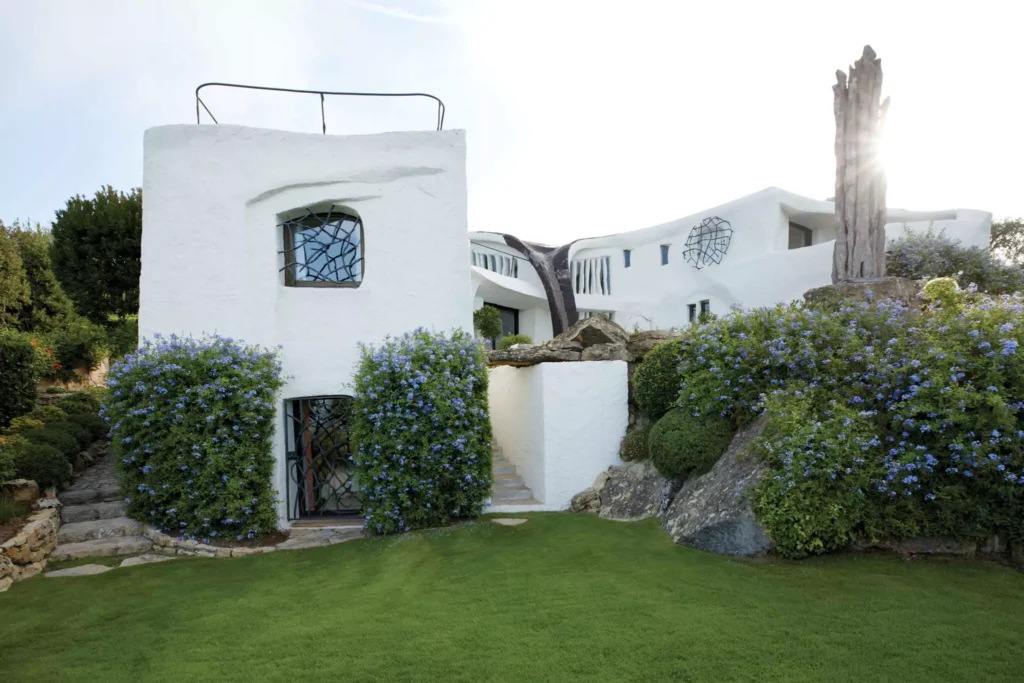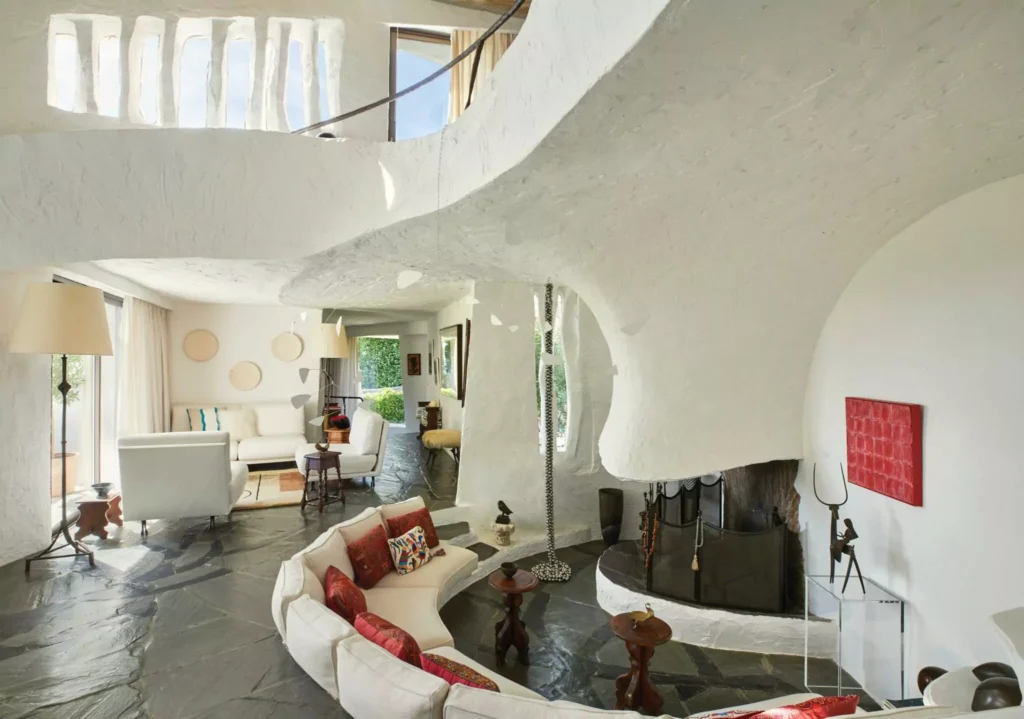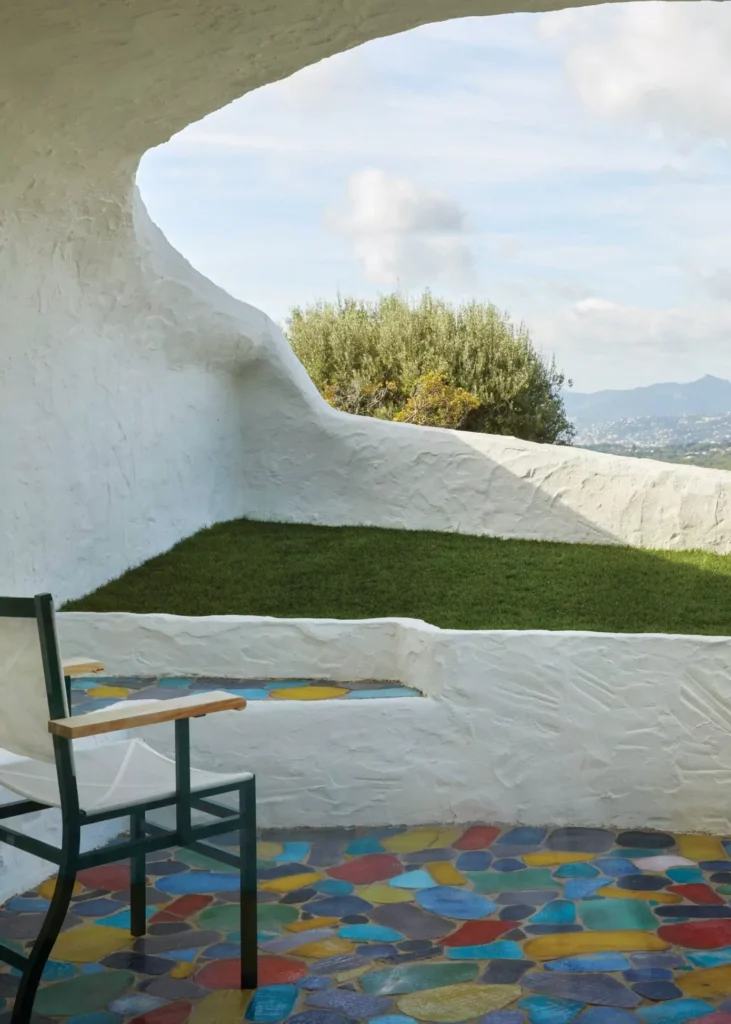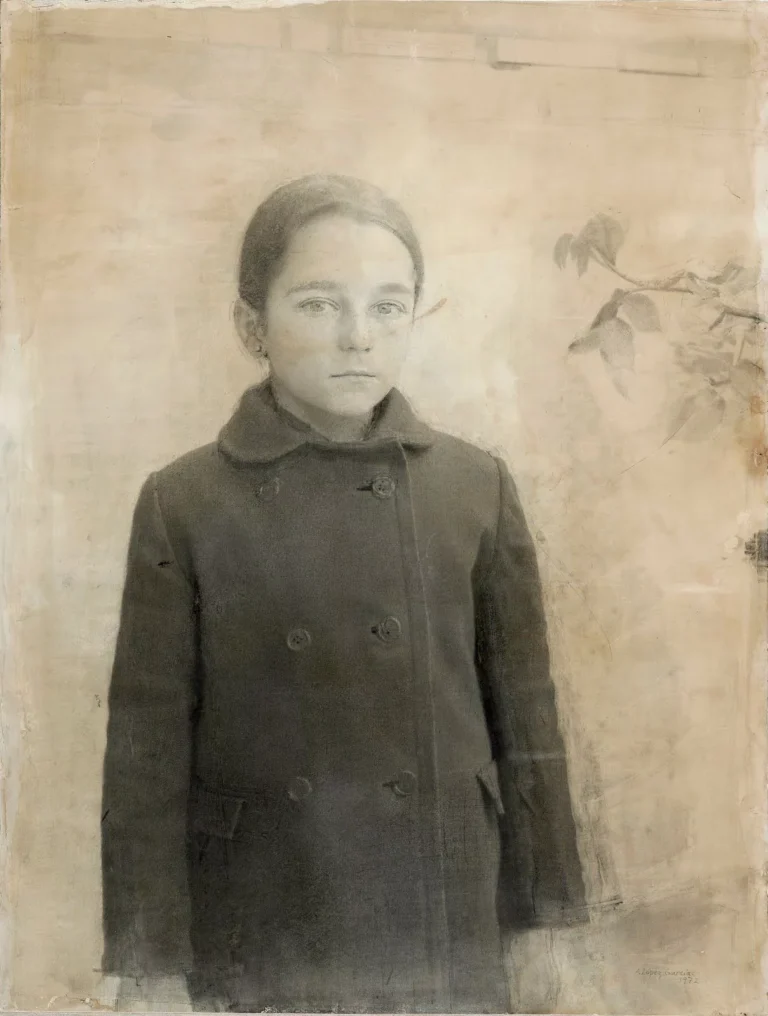Looking for a muse? Check no further. Discover the Best of Art, Culture, History & Beyond!

An architectural masterpiece that remains a cherished family retreat
In the late 1960s, a cosmopolitan New York couple with a passion for art was vacationing along the Côte d’Azur when a spontaneous house-hunting trip led them to a home unlike any other. Nestled in the exclusive hilltop village of Castellaras, between Grasse and Cannes, the property was part of a visionary architectural experiment by Jacques Couëlle. Known as Les Troglodytes—meaning “cave dwellers”—this collection of five sculptural homes was designed to blend seamlessly with the natural landscape.

At the time, Couëlle had intended to build 50 such houses, but their unconventional design proved too radical for most buyers. One, however, remained unsold. Standing on the rooftop terrace, taking in the sweeping views of the valley and distant mountains, the wife knew instantly that she had found her dream home. Turning to her husband, she made a simple but decisive request: “I’ve never asked you for anything. I’ve fallen in love. Buy me this house.” And so, the Sculpture House became theirs.
Decades later, their daughter—the home’s current owner—along with her children and grandchildren, remains equally enamored. Remarkably, it is the only one of the original Troglodytes that has never changed hands, its interiors and artistic embellishments preserved much as they were when Couëlle himself collaborated with the family to make the space uniquely their own.
A House That Lives and Breathes Art
From the moment one steps inside, it’s clear that this home is a living gallery. Every surface, from walls to ceilings, bears the imprint of artistic ingenuity. The main living space houses a museum-worthy collection of 20th-century art, including Pablo Picasso ceramics, a white Alexander Calder mobile, Diego Giacometti lamps, and a striking Robert Courtright collage. A fresco titled Le Route de Castellaras dominates the soaring walls, visually extending the slate floors with painted pathways that echo the winding roads of the surrounding countryside. Even the ceiling holds artistic surprises—Couëlle pressed leaves into wet cement, leaving behind a delicate pattern of organic impressions.

Architecturally, the house defies conventional forms. There are no right angles; instead, arched openings and undulating walls appear as though they have been sculpted rather than constructed. Windows, framed by dramatic “stalactites” of concrete and wrought-iron “thorny brambles,” were designed to manipulate light and shadow throughout the day.
Every element of the house was crafted with intent. Custom-built furniture, including a cantilevered dining table that extends from the wall, was designed to integrate seamlessly into the organic flow of the space. In the bedrooms, rather than freestanding nightstands, small niches and shelves were carved directly into the walls. Even the doors are unique—each one a sculptural statement, distinct from the next.
Jacques Couëlle’s Vision: Where Architecture Meets Nature
Long before designing Les Troglodytes, Jacques Couëlle had established himself as both an antiquarian and an architect, sourcing medieval artifacts for the wealthy elite and reconstructing them into opulent, modernized châteaux. But his true passion lay in something far more radical: architecture inspired by the natural world.
Like Antoni Gaudí before him, Couëlle believed that buildings should be organic, almost living entities. He once described his designs as resembling “madreporic sponges” or “snail shells,” referring to their fluid, concentric layouts that spiral around central patios. His interest in rapid construction techniques led him to develop a method of spraying concrete over metal frameworks—an innovation that allowed for the free-form, sculptural nature of Les Troglodytes.



The Sculpture House perfectly embodies this philosophy. The walls seem to emerge naturally from the landscape, their curves mimicking wind-swept rock formations. Stairways, designed to evoke the burrowed paths of anthills, wind through the interiors, adding to the home’s almost primal sense of movement.
Designed for Living, Inside and Out
While the Sculpture House is an artwork in itself, it was always meant to be lived in. The original owners, who loved to cook and entertain, requested modifications to better suit their lifestyle. Couëlle agreed to expand the modest kitchen, making room for a round dining table for casual meals. For more formal gatherings, he devised a clever solution: a broad ledge beneath the living room window that swings out to become a dining table for six.
Life here is centered around both art and nature. Since summers were spent largely outdoors, furnishings were kept minimal, with built-in elements like a curved conversation pit around the fireplace. The wife’s impeccable eye for design led her to commission Diego Giacometti—at the time, still relatively unknown—to create a wrought-iron coffee table and a pair of standing lamps. She filled the space with works by artists such as Jean Dubuffet and Gustave Singier, along with Picasso ceramics and local handcrafted pieces.
Outside, the home is just as breathtaking. Each of the five Troglodytes boasts its own free-form swimming pool overlooking the Bay of Cannes. Sprawling terraces feature vibrant mosaics of irregularly shaped tiles, turning even the walkways into works of art. A particularly striking facade installation doubles as a sculptural water feature, guiding rain from the roof to a fountain below. Lush, spiky tropical plants complete the scene, reinforcing the seamless integration between architecture and landscape.
A Timeless Masterpiece

Even after all these years, the home remains an untouched relic of artistic and architectural daring. When the current owner reflects on how her mother decorated the house, she recalls Couëlle’s approving words: “Vous avez compris Couëlle.”—“You have understood Couëlle.”
And indeed, the Sculpture House is more than a residence. It is a testament to a visionary architect’s dream, a place where art, nature, and design exist in perfect harmony.

This article is published on ArtAddict Galleria, where we explore the intersections of art, history, and culture. Stay tuned for more insights and discoveries!



